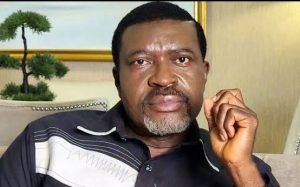Trump backs Netanyahu, but will voters? Your guide to Israel’s elections

The Prime Minister faces multiple corruption investigations, not to mention a formidable opponent. Netanyahu’s Likud party, which has held power since 2009, has trailed in some election polls the Blue and White party led by the former military general Benny Gantz.But Netanyahu, in office continually during this latest stint for a decade, has received plenty of help for his reelection bid from his good friend, US President Donald Trump.Here’s what you need to know.How does it work and who are the contenders?In this election, 40-odd political parties are vying for a spot in the Knesset, Israel’s 120-seat parliament. But only about 10 to 14 are expected to secure enough votes to make it in. And two parties are certain to stand head and shoulders above the rest: Netanyahu’s Likud, and Gantz’s Blue and White. Likud is a party on the right of Israeli politics, while Blue and White has positioned itself as centrist.Both of these parties are expected to win about 30 seats. In most election polls, Gantz has shown a consistent lead over Netanyahu, albeit by only a handful of seats, but that’s not the end of the story. Both leaders know they will need to rely on the support of smaller parties to form a coalition.Here, Netanyahu has a clear advantage. A number of smaller right-wing parties have already pledged their support for him — including one with its roots in a party banned in the 1980s for being racist — likely giving him an easier path to building a coalition. However, those smaller parties still need to cross Israel’s electoral threshold of 3.25% of the national vote. If they fail to do this, securing no representation in the next parliament, then Netanyahu’s path to another term as Prime Minister may look more difficult.Is Benny Gantz a breath of fresh air? Or more of the same?Benny Gantz is a rookie to Israeli politics. He finished his four-year term as Chief of Staff of the Israel Defense Forces in 2015, and then waited for the required “cooling-off period” to elapse before entering politics late last year. The party he founded, called Israeli Resilience, consisted entirely of candidates who had never served in the Knesset before. But to boost his chances of unseating Netanyahu, he merged his new party with two others, to form the Blue and White party, the name chosen to reflect the colors of Israel’s flag.The merger brought into the fold many who had previously served, not just in the Knesset, but in government as well, including Yair Lapid, who was once Finance Minister, and Moshe Ya’alon, who had been Defense Minister.In addition, Gantz’s time as Chief of Staff has already made him a known commodity in Israel. He was often photographed during high-level meetings with political leaders, including Netanyahu, especially after leading the Israeli military through two wars in Gaza in 2012 and 2014. Because of the country’s emphasis on defense and security, it is not at all uncommon for military leaders to enter politics. Former Prime Ministers Ehud Barak and Yitzhak Rabin both served as the Israeli army’s Chief of Staff.If Gantz is a breath of fresh air, it is because some voters see him as untainted by Israeli politics. Even so, with his long career in public service, and centrist leanings, it would be wrong to see him as anti-establishment. Rather, his platform is far more anti-Netanyahu, which just adds to the sense that this is very much a two-horse race. What does Netanyahu’s looming indictment mean for his future as PM?Netanyahu has repeatedly denied any wrongdoing and decried the criminal investigations he faces as a media-fuelled witch hunt. That message resonates with his voter base, even as the Attorney General has announced he intends to indict Netanyahu on charges of bribery and breach of trust, pending a hearing. The right-wing parties Netanyahu relies on to hold together his government have supported him so far, but some have suggested a final indictment against the Prime Minister could lead them to withdraw support.Under Israeli law, Netanyahu doesn’t have to resign until any possible conviction is upheld through the appeals process. Realistically, he would likely face huge political pressure to step down long before that.He has predicted the potential charges against him will be dropped after his hearing, but the Attorney General — a Netanyahu appointee — has laid out the framework of a detailed case against the Israeli leader. Few observers share Netanyahu’s confidence that the indictments will fail to materialize.And that may mean we are already in the beginning of the post-Netanyahu era. Politicians within his own Likud party have already begun maneuvering ahead of his eventual departure. And the looming indictments would inevitably figure in the calculations of any potential coalition partners in talks to form a new government. But “King Bibi,” as he was described in one recent documentary film, is the master of Israeli politics, and he knows how to use the system to his advantage. In short, don’t count him out just yet.How has Trump helped Netanyahu get a leg-up in the election?It’s no secret that Netanyahu and Trump are good friends with a very close personal relationship. Netanyahu has already featured Trump in his campaign, hanging giant banners of the two leaders together in cities like Tel Aviv.The US President’s recognition of Israeli sovereignty in the Golan Heights — long considered occupied territory under US foreign policy — came just weeks before the election. It was hard not to draw the conclusion it was intended, at least in part, to boost Netanyahu’s chances in the April 9 ballot.Days later, Netanyahu visited Washington, where he stayed in Blair House as an official guest of the White House. The Prime Minister was right next to the President as Trump signed the executive order recognizing the Golan as part of Israel, reinforcing the idea that the White House is rooting for Netanyahu.Trump is incredibly popular in Israel. His recognition of Jerusalem as the capital, his relocation of the U.S. embassy there from Tel Aviv, and his withdrawal from the Iran nuclear deal, have all helped his standing. And Netanyahu has happily cast himself as playing a key role in these moves. How is the Israeli-Palestinian conflict affecting the election?The Israeli-Palestinian conflict, historically one of the most important issues in Israeli elections and the traditional dividing line between left and right, is playing a minimal role this time around. There is so much bad blood between Israeli and Palestinian leaders that few believe real progress is possible at this point.What was once an ever-present issue in elections has barely made a blip on the radar in 2019, with the exception of Gaza. A rocket attack on a house in Tel Aviv threatened possible serious escalation with Hamas, but hostilities were tamped down, and serious debate over the future shape of Israeli policy towards Gaza was limited. What are the other main issues?These days, the debate on security tends to focus on the threat posed by Iran’s presence in Syria. Even his critics accept that Netanyahu seems to have navigated this well, both in his relationship with Russia’s President Vladimir Putin, and the military operations conducted against targets in Syria. Netanyahu has always projected himself as Mr. Security, but the three former Chiefs of Staff arrayed against him — Moshe Ya’alon and Gabi Ashkenazi, alongside Benny Gantz — all of whom are in the same party, means he no longer has that moniker all to himself.So, what is the main issue? It is Netanyahu himself, and this election is, to some extent, a referendum on the long-time Israeli leader. His base has mostly rallied around him, while those who want to see a new leadership free from corruption investigations have flocked to Gantz’s Blue and White party.How does voting take place?Israelis still vote using pieces of paper. And they are not choosing individuals, but rather parties. In the polling station, each voter selects one piece of paper, corresponding to the party list they want to support. They put that piece of paper in an envelope and drop it into the ballot box. Polls open at 07:00 and close at 22:00 local time (GMT +3). Counting begins immediately.One quirk of this process is the sheer amount of voting papers that get printed but never used. By law each registered voter must be presented with the opportunity to vote for any of the parties registered, which this time around numbers forty. With over 6 million eligible voters, that means more than a quarter of a billion voting papers are printed.When will we know the results?By law, the first exit polls released on election day come out at 10pm local time. This will give us the first idea of where the parties stand. But these exit polls are notoriously inaccurate. The first exit poll released at the last election in 2015 showed Likud with 28 seats and the rival Zionist Union party with 27 seats. After final results were tallied, Likud had 30 and Zionist Union was down to 24. In a Parliament of just 120 seats, small differences like that can make a big difference.Final results can take a few days, as ballot boxes are checked and votes come in from Israelis overseas.But the results should be obvious long before that, and it is usually fairly clear who has the best chance of building a successful coalition.Officially, it’s up to Israel’s president to decide who is tasked with forming the next government. He announces his decision after consulting with the heads of the political parties that have secured enough votes to enter the Knesset. These consultations take a few days, and the President is likely to announce his decision about a week after the elections. From that point, the party leader appointed to the task has six weeks to form a government. If he or she fails, the task is then assigned to another party leader.It is possible — though, on balance, unlikely – that neither Netanyahu nor Gantz will be able to form a coalition. In that case, Israel would go through three months of attempted coalition building, which may end up with the country headed for another election. Following a three-month campaign period, that election would likely be in late-2019. But that is a long way off. Let us first see how the results on April 9 come out.






